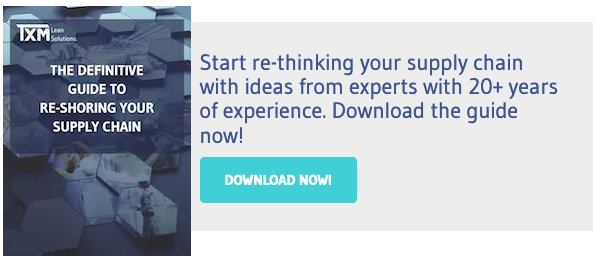The Top 6 Ways to Engage Suppliers to Improve your Supply Chain

Everyone wants to engage suppliers to improve performance. It seems like an easy win – no need to deal with messy organisational politics, no one to lay off (the suppliers can do that). No need for capital investment, just tell your suppliers to ‘do better’ and rivers of money will flow your way!
This is a slightly sarcastic view, I admit, but sadly for many companies their approach to suppliers is really that simplistic. ‘Surely the suppliers will do what we tell them. They want our business, don’t they?’ Unfortunately, things are not that simple.
That does not mean that trying to improve the competitiveness of your supply chain is a bad idea. In most businesses the largest single share of revenue goes to your suppliers. Therefore, reducing supply chain costs is the biggest lever that a business can pull to improve competitiveness. So how do you enlist your suppliers in your quest to improve competitiveness if you can’t ‘just tell them’?
What Kind Of Relationship Do You Have With Your Suppliers?
Many businesses I talk to will tell me that they have a great long-term relationship with their suppliers. They will say how they have worked with the same suppliers for years and how those suppliers are ‘strategic’.
When I talk to these suppliers, I also get a very different response. Often your ‘long term’ relationship is really an ‘order by order’ relationship. That is, a relationship between you and your supplier exists when you place an order. This relationship is then ended when that order is fulfilled, and you pay for the goods or service. The supplier in this situation does not know what commitment you have to them in the future, they will just treat your business ‘order by order’.
To do otherwise would be too risky for them, as you may not order. Therefore, they will not invest anything in your business, will not allocate capacity for you and will not source materials for you. It is also unlikely that you will get the best price, despite your efforts to ‘negotiate’ every order.
A similar, but the potentially worse approach is what I call the ‘trading approach’. This means that you put every order out to competitive quote or are constantly re-tendering your business. Procurement staff might argue that this saves money by always comparing the best to the worst quote, but the reality is again that you are unlikely to be getting value from even the best quote. It is also likely that unqualified suppliers will try and ‘buy’ your business and then fail to deliver. Rest assured that the lack of loyalty you show suppliers with this approach will be reciprocated when you really need help from a supplier.
For your key suppliers you need to establish proper long-term relationships. That means establishing supply contracts and service level agreements that outline your shared commitments to the relationship. Once the supplier knows that their relationship with you has some level of security (you usually don’t have to guarantee them business) then they can plan resources and capacity to meet your needs. It will also mean that they are more likely to dedicate their time and creativity to help you reduce costs in the supply chain.
To be clear, you cannot have it both ways. You cannot ‘shop your business around’ by getting multiple quotes for every order and then expect suppliers to show any commitment to your business at all.
1. Develop Service Level Agreements
One of my standard jokes is that most supply agreements run for 30 pages and mainly cover two topics – price and how to cancel the contract. This tends to be what lawyers and the procurement team are most concerned about. By contrast, a service level agreement with a supplier should be a practical document that outlines how your supply relationship works. It will typically cover things like:
- Lead times and response times
- Who is accountable for what in the relationship?
- Key metrics on both you and your supplier
- Reporting and regular communication
- Procedures around forecasting, ordering and delivery
- Packaging specifications and procedures
- Procedures to manage changes such as product introduction and obsolescence
It might also have rules about the level of inventory that the supplier can build of your product.
A service level agreement acts like the rule book governing your relationship. In Lean terms, it is the standard for your working relationship and so improving your working relationship can be about improving this standard.
2. Have Clear Goals Set Out With Suppliers
When you approach suppliers to discuss improving competitiveness you need to be clear about the type of improvement you need and why. This then gives some clear guidelines for the discussion and ensures that you do not get diverted from the areas that will give your business the greatest benefit.
3. Make Sure You Really Listen to Your Suppliers
One of my greatest frustrations is companies (particularly big companies) who just ‘talk at’ their suppliers rather than talk with them. These companies are usually also the ones most ready to run down their suppliers and say that their suppliers are ‘no good’. You need to learn how your business is impacting negatively on your supplier’s business. Often your way of doing business will be building costs into your supplier’s business. Inevitably these costs will be passed back to you. Therefore, you need to work on building trust with your supplier and listen to their issues to highlight these opportunities.
4. Avoid Hidden Agendas and Be Fair
We get a lot of approaches from companies who want us to help them with supplier development. Unfortunately, for too many of them this is just an exercise in cost reduction. The expectation is that the supplier will improve their business and reduce their costs.
All the benefits of this improvement will then go to the customer who will still feel completely free to switch their business to the next supplier that comes along 5% cheaper. It is hardly surprising that such approaches are not successful!
On the flip side, we worked with a major European company to help a supplier implement Lean. The customer (our customer) paid for the work and put in a lot of effort and then the supplier refused to share ANY of the benefits with their customer.
Before embarking on working with suppliers it is important to get a few things clear:
- What are the potential benefits for each party and how will they be shared?
- What kind of benefits are you expecting? Often it is better to target things like lead time, quality and ease of doing business first rather than just trying to attack unit cost. This means you can learn to work together and build trust while keeping the vexed issue of price out of the discussion. Often improving these other metrics can lead to large cost benefits anyway.
- Who will pay for what? If you plan to engage external support such as TXM it is important to know who will pay for what. If you expect the supplier to pay for everything, then they might rightly say that they keep all the benefits. On the other hand, if you fully fund the work, the supplier may not take it as seriously as they would if they were contributing financially.
- Observe confidentiality and no spying! It is hugely tempting to use a joint improvement project as an opportunity to gather data on your supplier’s cost structure to use in future price negotiations and even for bench-marking with other suppliers. You will only do this once, because after you do, your relationship with that supplier will be destroyed forever as they will be unlikely to ever trust you again. So, resist the temptation.
5. Map the Extended Value Stream
Real value in the supply chain comes when you look beyond the boundaries of your business or of your supplier’s business and look at the total extended supply chain encompassing you, your supplier, your distribution network and even their key suppliers. This extended value stream map will reveal how the different parties in the supply chain interact and identify where the waste is created between businesses. Often relatively simple changes at one end of the supply chain can have big benefits at the other.
6. Be In It For the Long Term
If there is one lesson to be learned from Toyota and the other Lean companies is that working with suppliers is a journey, not an event.
Investing in building good supplier relationships can deliver huge and ongoing benefits for both you and your supplier’s business. Over time you become partners, working together to constantly find improvements and deliver improved value. As the old saying goes ‘two minds are better than one’ and so when you and your supplier can apply both your minds to improve your businesses you will deliver much better results than going it alone.








